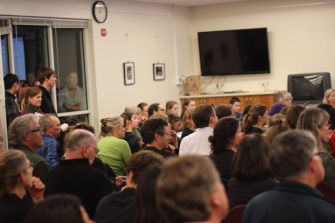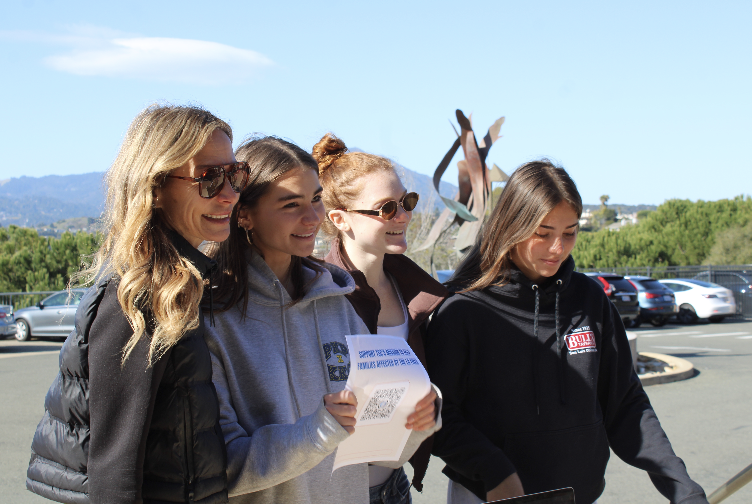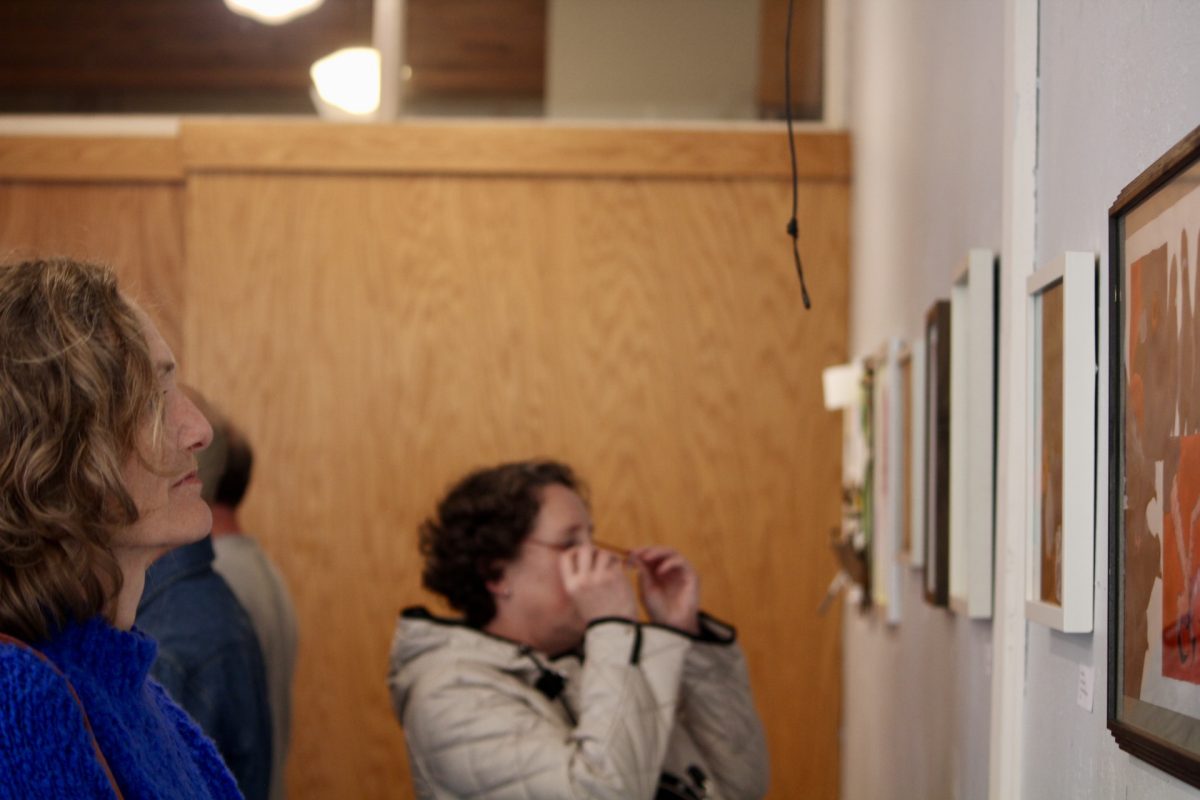
In front of an overflow crowd of Team supporters, Superintendent Laurie Kimbrel and the Board of Trustees considered options for the future of the Team program.
As hundreds of audience members clutched “Save Team” signs and those outside pressed their own signs against the windows, Kimbrel thanked the Team supporters for coming to the board meeting Wednesday night at Kreps Lounge, and laid out the administration’s recommendations to the board in regards to the Team program.
Included in the discussion was the newly formed “Option A” that was conceived in response to the high levels of support the Team program has received following the District’s announcement of its possible elimination on Jan. 25.
“Choice A came from you,” Kimbrel said.
Option A was proposed last Friday by the district administration as a method to keep the Team program. The plan would continue Team and attempt to serve more students with programs similar to Team.
It would require budget cuts for funding, but as of now, Board President John Wright said there has been no discussion on where those cuts would be made.
Option B, the original proposal from Kimbrel, would eliminate the Team program and redistribute its $260,000 budget to the district’s three big comprehensive schools – Tam, Drake, and Redwood. In addition to its budget, Team usually raises between $60,000 and $70,000 a year, Kimbrel said.
Originally, the cost of Team — $260,000 for 24 students — was cited as a reason for the District’s initial decision, although per pupil costs could also include other district expenditures as well.
According to the District budget for the 2012-13 fiscal year, $14,601 is spent on each pupil in the district per year.
Despite the potential for extra funding to the big three comprehensive schools with the elimination of Team, the Board members who spoke at the meeting generally supported Team’s continuation.
“The sense of the Board from the conversation is that we favor keeping the program,” Wright said.
Although option A would allow for the continuation of Team, it would also attempt to address the major concerns that the Board and Kimbrel have. These concerns include the low numbers of minorities and low-income students that the program has served in recent years.
Kimbrel said that just one black student and three Hispanic students have been in Team during the last six years, according to district records.
Trustee Susan Schmidt, who had a son previously in the Team program, was also concerned with the types of students admitted into Team, citing anecdotal evidence that suggested that Team does not currently serve the needs of low achievers as well as it once did.
Schmidt said that in emails she received from former and current Team students, it became clear to her that prior to 2006, the Team program was more balanced in the types of students it served. Now, however, Schmidt believes it is comprised of mostly high-achieving students.
Reiterating the words of many Board members, Schmidt said Team must reflect the low-income, special education, and minority populations of the district.
Wright said that methods to reach out to those populations have not been discussed among the Board, but that it would not involve a quota system, as some in the audience had said.
“No one is proposing ever, that we say, ‘Well, we are going to have some type of quota, that there must be this number of low-income or this number of race,’” Wright said. “I think I would call it more affirmative action to outreach to those populations and encourage them to apply.”
In their comments, Board members Cindy McCauley and Monica Bonny expressed worry for those who are rejected from Team.
According to Bonny, Team’s acceptance rate is about 25% and over 80 kids applied last year. She said that the District must find ways to reach more than just the 24 junior students enrolled in Team.
What was not debated by Board or Team supporters was the effectiveness of the program.
The packed boardroom featured numerous former and current “Teamies,” all eager to testify to the strength of their experience.
As dozens of former team students addressed the Board during the public comments period, the capacity crowd was occasionally brought to tears by those who described how Team changed their lives.
Rhea Stewart-Laws, a Team member from the 1995-96 school year, was one “Teamie” who described her experience to the Board.
“I was one of those kids who was not doing well in school and I hated everything,” said Stewart-Laws, eyes still red from earlier tears. “When I went on that first backpacking trip, it completely changed my life and my perspective on life.”
Current Team student Ricky Olivares said that it was heartwarming to see the level of support from the community for the continuation of the Team program.
“It’s nice to see that everyone here understands that this program is what the school district needs,” Olivares said. “That the values this program has should be outlined in the district.”
Olivares also downplayed the lower levels of minority and low-income students in Team.
“Team isn’t for everyone, clearly, so if they see that in kids that are applying then they don’t accept them,” he said. “It’s not just about that we refuse to accept lower-scoring kids or lower-income kids. It’s just kind of if they have a lack of drive to change or to be different or be better.”
Despite the Board’s concerns with the Team program, highlighted by the diversity issues, Wright said that it seems likely to him that option A will be implemented by the District.
According to Wright, because Team already exists, there would be no need to vote to continue it. A vote would only occur if there was a motion among the Board members to eliminate the program.
“There are certain implementation things, like we will have to approve who the teacher is…but honestly given the sense of the Board that we would like to find a way to keep it, I don’t think we need to vote on that,” he said.






